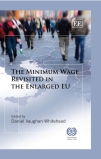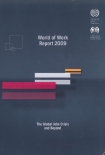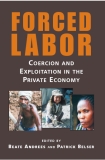Publications on Wages
February 2010
-

Publication
The minimum wage revisited in the enlarged EU
22 February 2010
This book assesses the renewed interest in the minimum wage in Europe, looking at the main explanatory factors alongside EU enlargement and the advent of globalization. Through 15 country studies and thematic case studies, it explores the national issues surrounding the minimum wage and identifies concrete effects of minimum wage fixing on employment, low pay, wage disparity, collective bargaining and migration. The volume concludes with policy options and raises the possibility of a minimum wage - or at least some common rules - at EU level.
January 2010
-
Publication
Global Employment Trends, January 2010
26 January 2010
An update of the annual ILO Global Employment Trends series, available since 2003
-

Publication
World of work report 2009. The global jobs crisis
11 January 2010
This World of Work Report from the International Institute for Labour Studies presents a highly relevant discussion of the jobs crisis resulting from the financial and economic crisis, in a non-technical manner, based on the latest data and economic analysis, with full technical annexes. The authors assess the crisis and provide a broad overview of its social effects, with particular emphasis on the structural imbalances in the globalization process that paved the way for the crisis. In addition, the report analyses conditions for a new growth and globalization model - one that would be more socially and environmentally sustainable. This timely report is an important addition to the discussions of socially sustainable growth, establishing the World of Work Report as a new authoritative source on labour issues.
-
Publication
Working Conditions of Contract Workers in the Oil and Gas Industries
01 January 2010
Working paper 276
November 2009
-

Publication
Global Wage Report: 2009 Update
02 November 2009
The present report is an update of the Global Wages Report 2008/09 released in November 2008. While a comprehensive assessment will be provided in the next full Global Wage Report in 2010, the present update already provides some indications of wage trends up to the second quarter of 2009 in a number of countries around the world.
August 2009
-

Publication
Forced labor: Coercion and exploitation in the private economy
26 August 2009
PRAISE FOR FORCED LABOR "Excellent. . . . This state-of-the-art volume provides a first-rate analysis of the dynamics leading to the occurrence of forced labour, its global distribution,and different types of policy responses." -Jens Lerche, SOAS, University of London. Two centuries after the abolition of the transatlantic slave trade, at least 12.3 million people are subjected to modern forms of forced labor - in rich countries, as well as poor ones. The authors of Forced Labor present state-of-the-art research on the manifestations of these slavery-like practices, why they continue to survive, and how they can be eliminated.
March 2009
-
Publication
Global Employment Trends for Women report, 2009
05 March 2009
This issue of the Global Employment Trends for Women looks at the gender aspects of the impact of the financial crisis and slowdown in world economic growth on jobs, and updates indicators on the situation of women in labour markets around the world.
-
Publication
Working Paper No. 92 - Gender (in)equality, globalization and governance
01 March 2009
February 2009
-

Publication
Promoting equity: Gender-neutral job evaluation for equal pay. A step-by-step guide
12 February 2009
Significant gender disparities in pay are amongst the most resilient features of labour markets. This step-by-step guide sets out the various methodological components of the process and explains the criteria, which should be met in order to avoid discriminatory practices.
January 2009
-

Guidelines
Promoting Equity: gender-neutral job evaluation for equal pay. A step-by-step guide
10 January 2009
This Guide, to be used when mplementing the principle of equal remuneration for work of equal value, free from discrimination based on sex, as enshrined in the ILO Equal Remuneration Convention, 1951 (No. 100), is in keeping with the Follow-up to the ILO Declaration on Fundamental Principles and Rights at Work and, in particular, with the 2003 and 2007 Global Reports devoted to equality at work. It is meant as a tool to be used to promote this principle in many different workplace environments. To date, the ILO Convention No. 100, adopted in 1951, has been ratified by 167 countries. However, despite this broad consensus regarding the principle enshrined in it, the pay gap between women and men remains a persistent and universal fact of the labour market. Recent statistical surveys have revealed that this gap exists in countries with very diverse economic structures and that, although the gap is decreasing in most of these countries, this progress is being achieved very slowly. The gap persists despite the significant gains women have made in terms of education and work experience.